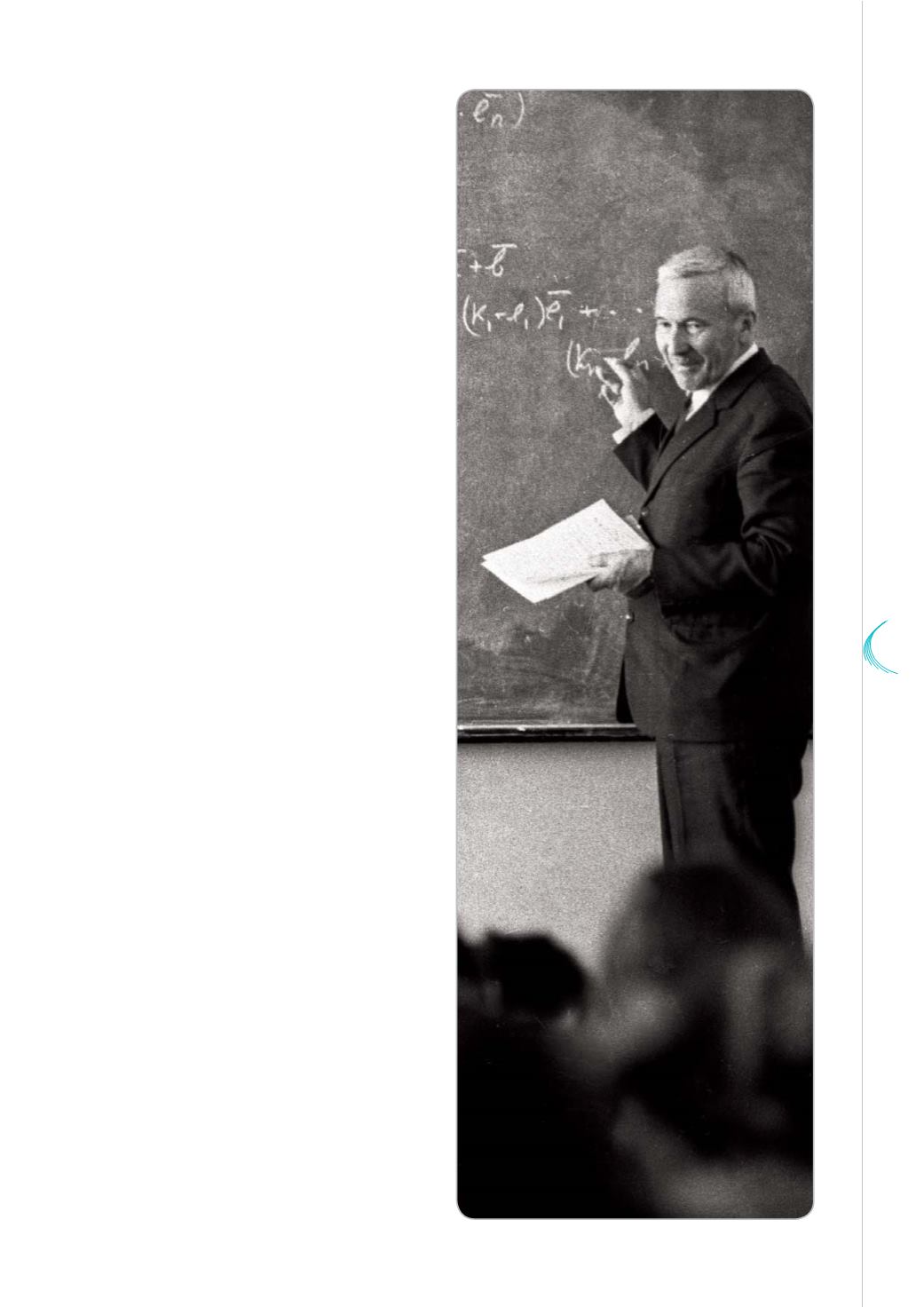

350
YEARS
OF
SCIENCE
85
© SPUTNIK - Alamy
Andrei Kolmogorov (1903-1987)
The beginning of the 20
th
Century also had
its train of revolutions. Measure theory, and
probability theory, were refounded by Borel,
Baire, Lebesgue and Kolmogorov. Statistical
physics, quantum mechanics and even
finance: all received their own personalized
mathematical expression. But the most
amazing of such scientific storms took place
in logic, questioning the very foundations of
the discipline – what is a reasoning, what is
a proof, which are the problems that have
a solution and those that do not? And what
does this mean: “1+1=2”? A source to the
Principia Mathematica
written by Russell and
Whitehead (a volume of which ends up, after
nearly 400 pages, to the eventual proof that
1+1=2!), and to the works of Hilbert, Church,
Gödel and others, such an abyss of perplexity
eventually spurred Von Neumann, Turing and
Shannon on to imagine computers, as logical
machines able to perform any mathematical
operations. Interestingly enough, one of the
first motivation of these pioneers of computer
science was the systematic study of
differential equations – definitely a universal
topic.
It is impossible here for me to pay tribute
to the mathematical development of the
20
th
Century, which may have been the
richest of all. Beside the new conceptual
feats achieved by the great Bourbaki, Weil,
Noether, Banach, Wiener, Riesz, Atiyah,
Cartan, Hardy, Ramanujan, Littlewood,
Chern, Grothendieck, Cohen, Leray,
Hironaka, Itô, Serre, Gel'fand, Schwartz,
Hörmander, Carleson, Nash, De Giorgi,
Solovay, Malliavin, Gromov, Langlands,
Thurston, Varadhan, Wiles, Perelman and
so many others, hundreds of new topics
emerged. I shall mention only one, which is


















